1958 OLDSMOBILE SUPER 88 ROCKET BARN FIND!!!! HOTROD LOWRIDER MUSCLE CAR CLASSIC
- Price:
- Make: Oldsmobile
- Model: Eighty-Eight
- Trim: ROCKET 88
- Year: 1958
- Mileage: 78,000
- VIN: 588W05523
- Color: Black
- Engine size: 371 CI BIG BLOCK
- Number of cylinders: 8
- Fuel: Gasoline
- Transmission: Automatic
- Drive type: RWD
- Interior color: RED/WHITE
- Vehicle Title: Clear
- Location: Pylesville, Maryland, United States
Description
BARN FIND!!!!!!!! This vehicle has been stored in a barn for over 30 years. The vehicle is complete and is a perfect start for a restoration. All glass, Trim, badging,engine,trans etc is all there. You will never find another one this old with all the trim still present. I also have a brand new rechromed rear bumper that will go with the car.Please call me with any questions or concerns. 410-952-5455
The Oldsmobile 88 gained an all-new look in 1957, one year ahead of corporate siblings from Chevrolet and Pontiac. Rakish, lower rooflines with a larger hood and grille denoted the new bodies, while the famous ?Rocket? V-8 was bored and stroked to a significantly larger 371 cid with 277 hp. The highly touted J-2 option, which only added $83 to the price, boosted power output to a remarkable 300 hp. This performance option added triple carburetors (with only the center carburetor working in normal driving) and higher compression, and it bumped the car?s 0-60 time to less than 9 seconds.
The Olds 88 was available as either an entry-level ?Golden Rocket? or a mid-level ?Super Golden Rocket,? with a host of body styles. Two- and four-door Holiday hardtops joined two- and four-door post sedans, a convertible, and a new four-door Fiesta hardtop station wagon. These Fiesta bodies were actually contract built by Mitchell-Bentley?s Ionia Body Company, which was one of the few times that a non-Fisher body was used by GM during this era.
The Oldsmobile 88 gained an all-new look in 1957, one year ahead of corporate siblings from Chevrolet and Pontiac. Rakish, lower rooflines with a larger hood and grille denoted the new bodies, while the famous “Rocket” V-8 was bored and stroked to a significantly larger 371 cid with 277 hp. The highly touted J-2 option, which only added $83 to the price, boosted power output to a remarkable 300 hp. This performance option added triple carburetors (with only the center carburetor working in normal driving) and higher compression, and it bumped the car’s 0-60 time to less than 9 seconds.
The Olds 88 was available as either an entry-level “Golden Rocket” or a mid-level “Super Golden Rocket,” with a host of body styles. Two- and four-door Holiday hardtops joined two- and four-door post sedans, a convertible, and a new four-door Fiesta hardtop station wagon. These Fiesta bodies were actually contract built by Mitchell-Bentley’s Ionia Body Company, which was one of the few times that a non-Fisher body was used by GM during this era.
Newly available for 1957 was GM’s built-in air conditioning system, which joined power brakes, power steering, power windows, power seats, and Jetaway dual-coupling Hydramatic automatic transmission on the Oldsmobile option list.
For 1958, the big Oldsmobiles became even more massive, with a near complete restyle of the bodywork. Front side covings reached back from four headlamps along the fenders and tapered out on the front doors. Four chrome strakes extended from the mid-rear sides to the huge chrome tail lamp bezels.
Under the hood, the Dynamic 88 featured a new two-barrel carburetor that offered a 265-hp rating with 20% better fuel efficiency, while the Super 88 used a four-barrel carburetor good for 305 hp. The J-2 tri-carb setup with 312 hp remained optional on both models. Other new features included a Safety-Vee steering wheel, dual-range power heater, and a removable transistor radio. Perhaps most importantly, Oldsmobile offered New-Matic air ride suspension for all four corners, though reliability issues meant the system was only available through the 1959 model year before it was retired.
In 1959, Oldsmobile radically redesigned their lineup to become wider, longer, and lower, but not before half a million of this generation left the line. Today, the 1958 Oldsmobiles stands out as one of the most chrome-clad cars of any era. The cars are also known for their quality of construction, outstanding performance (for a full-size car, at least), and their durability. Conventional wisdom advises to steer clear of any New-Matic systems, especially if you plan on using the car in winter weather, though many such examples have been converted to more common spring setups.
">Newly available for 1957 was GM’s built-in air conditioning system, which joined power brakes, power steering, power windows, power seats, and Jetaway dual-coupling Hydramatic automatic transmission on the Oldsmobile option list.
For 1958, the big Oldsmobiles became even more massive, with a near complete restyle of the bodywork. Front side covings reached back from four headlamps along the fenders and tapered out on the front doors. Four chrome strakes extended from the mid-rear sides to the huge chrome tail lamp bezels.
Under the hood, the Dynamic 88 featured a new two-barrel carburetor that offered a 265-hp rating with 20% better fuel efficiency, while the Super 88 used a four-barrel carburetor good for 305 hp. The J-2 tri-carb setup with 312 hp remained optional on both models. Other new features included a Safety-Vee steering wheel, dual-range power heater, and a removable transistor radio. Perhaps most importantly, Oldsmobile offered New-Matic air ride suspension for all four corners, though reliability issues meant the system was only available through the 1959 model year before it was retired.
In 1959, Oldsmobile radically redesigned their lineup to become wider, longer, and lower, but not before half a million of this generation left the line. Today, the 1958 Oldsmobiles stands out as one of the most chrome-clad cars of any era. The cars are also known for their quality of construction, outstanding performance (for a full-size car, at least), and their durability. Conventional wisdom advises to steer clear of any New-Matic systems, especially if you plan on using the car in winter weather, though many such examples have been converted to more common spring setups.
1958 Oldsmobile Super 88 Info- 0" >
- Body Styles
- 2dr Convertible
- 2dr Holiday Coupe
- 4dr Holiday Hardtop Sedan
- 4dr Sedan
- 0" >
- Engine Types
- 8-cyl. 371cid/305hp 4bbl
- 8-cyl. 371cid/312hp 3x2bbl
- Number Produced
- 18,653
CURRENT & HISTORICAL VALUESCurrent Values
- #1 Concours$32,900Condition #1 vehicles are the best in the world. The visual image is of the best vehicle, in the right colors, driving onto the lawn at the finest concours. Perfectly clean, the vehicle has been groomed down to the tire treads. Painted and chromed surfaces are mirror-like. Dust and dirt are banned, and materials used are correct and superbly fitted. The one word description for #1 vehicles is "concours."
- #2 Excellent$22,500
- #3 Good$15,200
- #4 Fair$10,300
- THE $500.00 DEPOSIT IS NON REFUNDABLE IF I DO NOT RECIEVE FULL PAYMENT WITHIN 7 DAYS AFTER THE AUCTION IS OVER I WILL RELIST THE ITEM FOR SALE
 classic ,muscle , hotrod , lowrider, original , can be converted to a 442 clone
classic ,muscle , hotrod , lowrider, original , can be converted to a 442 clone
Mileage: 87,000
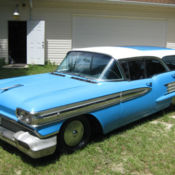 1958 Oldsmobile Super 88 Fiesta Station Wagon Barn Garage Find NO RESERVE
1958 Oldsmobile Super 88 Fiesta Station Wagon Barn Garage Find NO RESERVE
Mileage: 28,567
 1958 OLDSMOBILE SUPER 88 FIESTA 4 DOOR HARDTOP WAGON, ESTATE SALE BARN FIND
1958 OLDSMOBILE SUPER 88 FIESTA 4 DOOR HARDTOP WAGON, ESTATE SALE BARN FIND
Mileage: 39,876
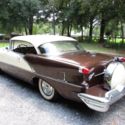 1956 Oldsmobile Rocket 88 With Continental Kit Garage Barn Find NO RESERVE
1956 Oldsmobile Rocket 88 With Continental Kit Garage Barn Find NO RESERVE
Mileage: 93,210
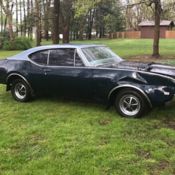 1968 Oldsmobile cutlass supreme 350 rocket barn find project car
1968 Oldsmobile cutlass supreme 350 rocket barn find project car
Mileage: 117,500
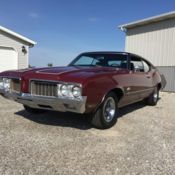 1970 Oldsmobile Cutlass S 350 Rocket Factory 4 Speed , Stock Barn Find Survivor
1970 Oldsmobile Cutlass S 350 Rocket Factory 4 Speed , Stock Barn Find Survivor
Mileage: 73,500
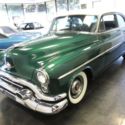 1953 Oldsmobile Super 88 Rocket 303 V8 Coupe Stunning Car Rare Find Must Be Seen
1953 Oldsmobile Super 88 Rocket 303 V8 Coupe Stunning Car Rare Find Must Be Seen
Mileage: 32,947
 Classic 1967 Oldsmobile cutlass supreme convertible muscle car/ hotrod/ratrod
Classic 1967 Oldsmobile cutlass supreme convertible muscle car/ hotrod/ratrod
Mileage: 119000
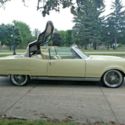 1967 Oldsmobile Ninety-Eight 2 Door Convertible Super Rocket V-8 Classic
1967 Oldsmobile Ninety-Eight 2 Door Convertible Super Rocket V-8 Classic
Mileage: 84000










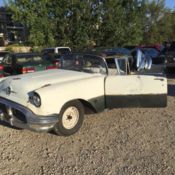 1956 Oldsmobile Super 88 Rocket Convertible! 1957 1958 1959 1960
1956 Oldsmobile Super 88 Rocket Convertible! 1957 1958 1959 1960